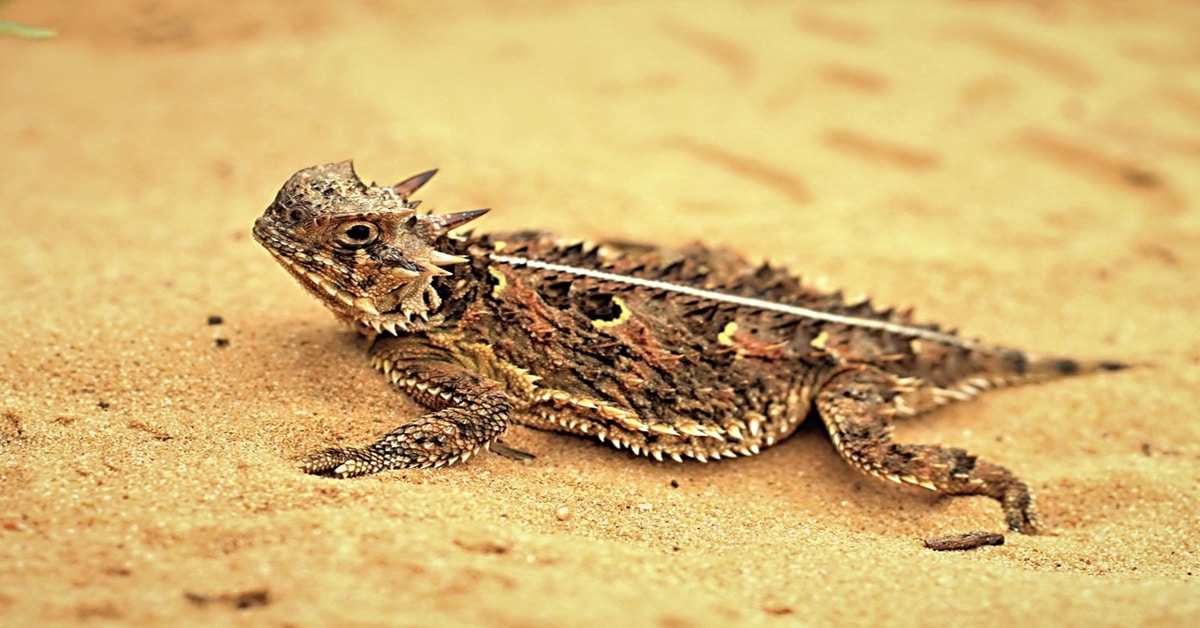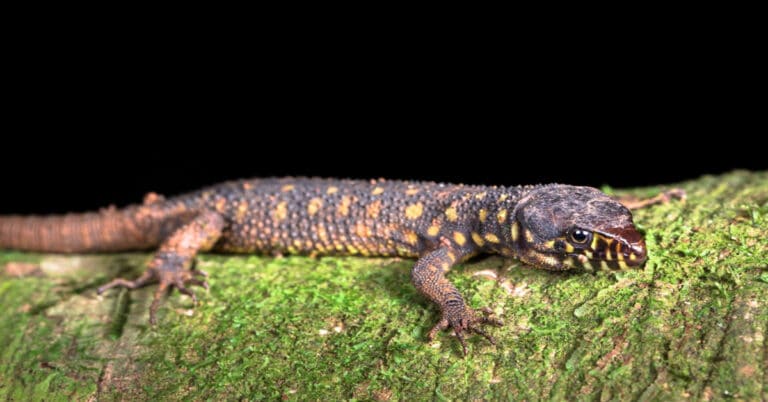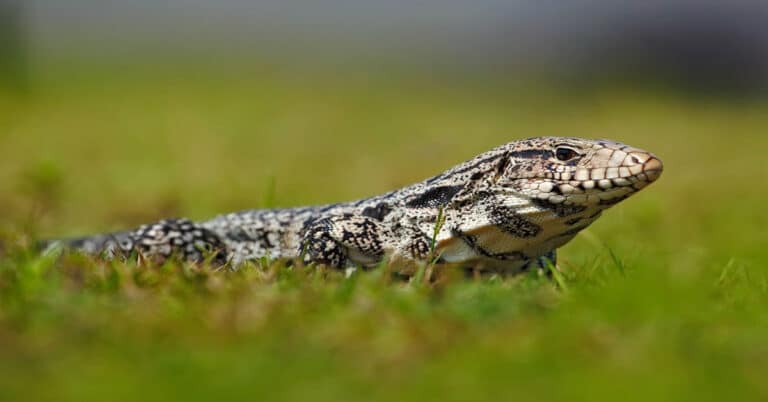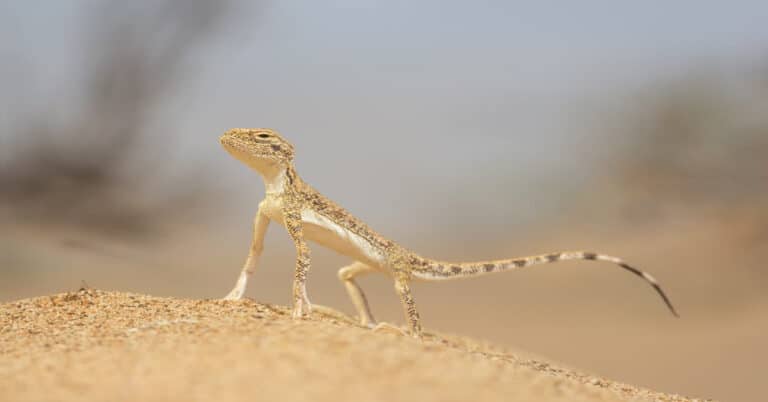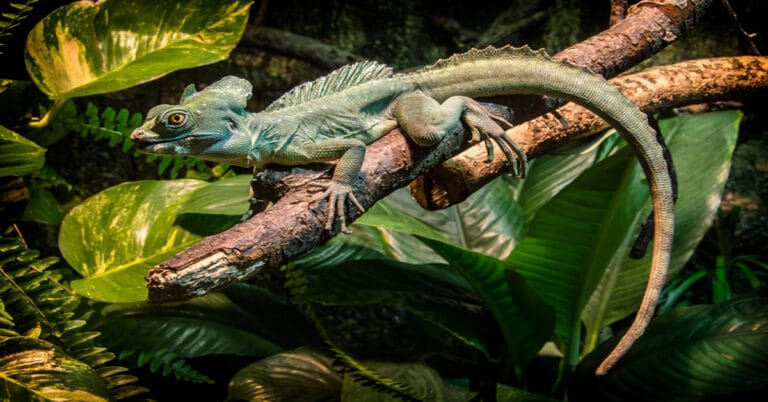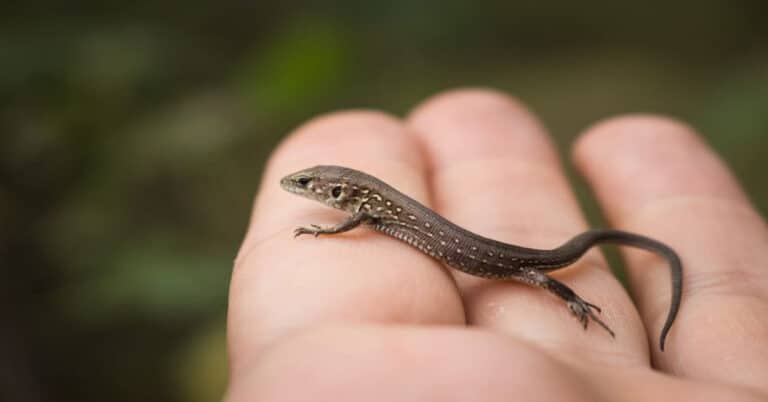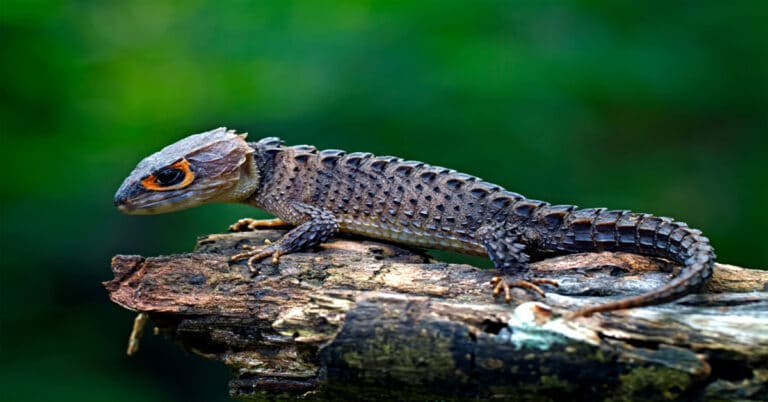Horned Lizard
Scientific Classification
| Kingdom: | Animalia |
| Phylum: | Chordata |
| Subphylum: | Vertebrata |
| Class: | Reptilia |
| Order: | Squamata |
| Suborder: | Lacertilia |
| Family: | Phrynosomatide |
| Genus: | Phrynosoma |
The horned lizard, belonging to the lizard family Phrynosomatidae, genus Phrynosoma is a well-known lizard known by the names “horned frog”, “horny toad”, or “horned toad”, but it is neither a frog nor a toad. The well-known names are a derivation from the blunt snout and the rounded body of the lizard, by which it resembles a frog or toad. (“Phrynosoma” actually means “toad-bodied”).
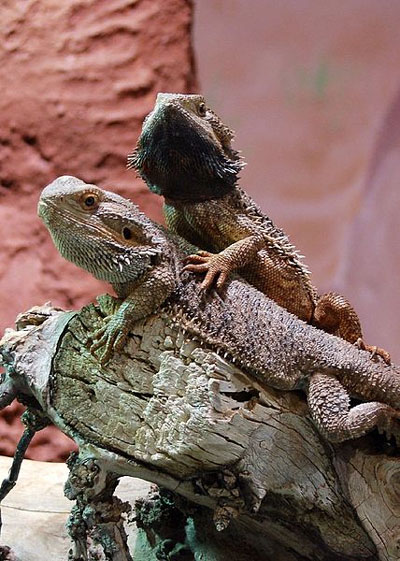
Anatomy
The various varieties of the horned lizards belonging to the genus Phrynosoma have flattened and a very broad body similar to a toad. It has a short tail that broadens at the base. In most of them, the temples and head have a crown with an outstanding row of sharp and pointed horns. The sides and the tail have fringes of sharp spines and some varieties sport decorated with double fringed spines. On their back they have, laterally arranged short spines in a conical shape. The pointed horns jutting out over their prominent eyes gives an awfully frightful appearance.
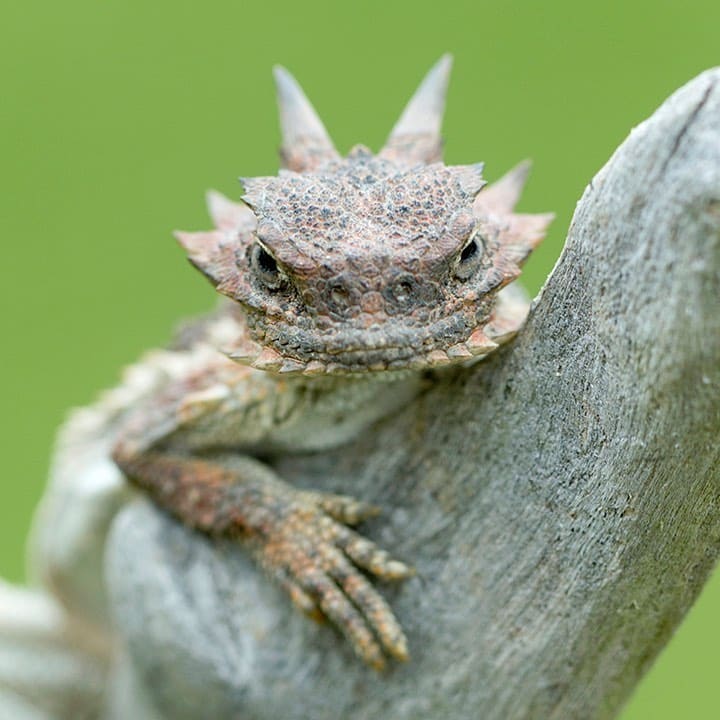
Behavior
Camouflaging comes easily to these horned lizards. When attacked, their initial defense measure is to remain motionless to avoid attention. When you reach close to them, they normally run in small bursts, thus deviating the attention of the predator. In case they fail, they will bloat up their bodies to look larger with more horn, making it difficult for the predator to swallow. There are four species which squirt and shoots a stream of blood from the corner of their eyes up to a distance of five feet. This is done by stopping the flow of blood to the head and increasing the blood pressure, thus bursting tiny blood vessels around the eyelid.
Habitat
Horned lizards occur specifically in Mexico and the western provinces of the United States. 14 varieties of them exist. Their habitat ranges from the British Columbia south of Guatemala and from the Arkansas to the coasts of the Pacific Ocean. You find these lizards in places where it is sandy, dry and hot. A few of the desert horned lizard species dwell in the desert regions where the heat of the sun strikes on the dry site producing heat from the ground that is nearly intolerable to human beings. The remaining go into the mountainous regions and you can see them at a height of 10,000 feet.
As a pet
Housing
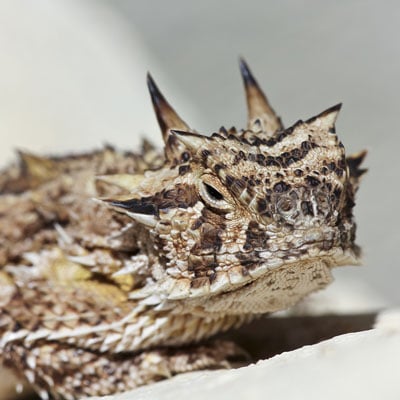
Simulating the home climate in outdoor cages is in many ways better for the horned lizards. For many reasons, the natural geographical environment is insufficient with respect to the climate and intensity of sunlight, whereas, in an enclosed environment, this is possible with a UV or you can offer basking temperature by artificial heating or lighting arrangement in the terrarium. Otherwise, a complete interior structural arrangement is necessary.
The normal size of an aquarium placed indoors is 40 gallons. Do not place more than two lizards in the enclosure of a size less than 40 gallons; a 40 gallon tank is ideal only for a pair. The bigger the tank better the comfort and the environment for the horned lizard. Horned lizards require enough space to run about and replicate their natural dwelling.
Horned lizards burrow. The lizards dig their way through the powdered walnut shells to their satisfaction and this substrate is cheaper than sand.
Food
Harvester ants are the favorite food of these horned lizards. They also consume crickets that unsuspectingly walk towards them. By all means provide calcium/vitamin supplements. In case you come across an ant hill attempt giving them a few local ants. Make certain that in case you feed them insects like mealworms, crickets, etc. they are the tiniest in size. The jaws of the horned lizards are not strong enough and they habituate to predate on small prey which they raise with their tongue, like ants. When you offer harvester ants give them only a little at a time. If the numbers of the ants are many, they may become violent and hurt the lizard.
Handling
Handling horned lizards develops stress in them. Even though they dislike handling, they just tolerate it. When you touch them you see them raising the horns on their head as a protectionist reaction. Most of the people take a fancy to stroking the head of the lizard and enjoy the sight of them closing their eyes and ducking their heads, as how a dog reacts when you pet it.. But this is a different case, it is a posture of defense to evade a known predator.

Having discovered a fondness for insects while pursuing her degree in Biology, Randi Jones was quite bugged to know that people usually dismissed these little creatures as “creepy-crawlies”.

